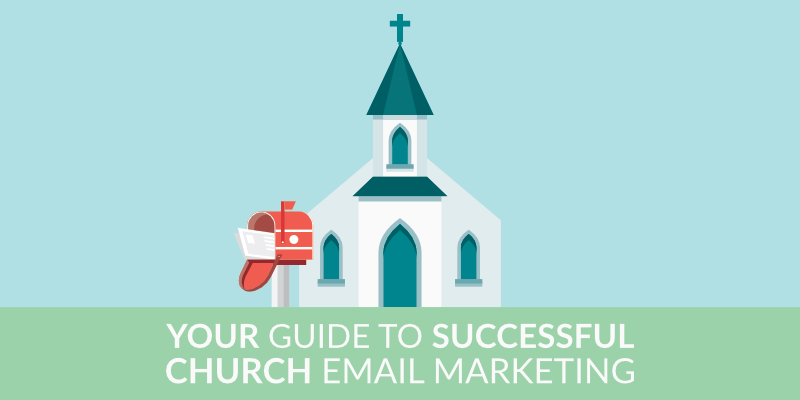
In today’s digital age, harnessing the power of the internet and its ease to convey messages is often not utilized enough by the church. Whereas once people stayed in the communities they lived in for their whole lives, it is now more common for people to relocate, whether it be for university or jobs, and therefore lose contact with the church they once went to in the village they grew up in.
However, it doesn’t have to be like that as you, as the church, can keep in contact with your parishioners wherever they may be, in addition to attracting new members so they feel like a part of the community and keeping dedicated members up to date with church matters during the week before they meet up again.
One of the best ways of doing this is through email marketing.
How many times do you check your inbox everyday? Exactly!
Now your church focused email could be landing in any number of people’s inboxes, keeping them up to date with what’s going on, what the spiritual focus is at the time and any special events the church may be playing a part in.
But where do you start and how do you make it work for you? Fortunately, we’ve created this quick guide to help you along the way.
Choosing an email provider

Rather than sending out emails from your personal inbox, there are a number of online platforms that enable you to quickly upload a subscribers list, create templates that are easy to change around month on month or week on week, depending on how often you want to send your emails out, and also assess how well received they were by exploring open rates and other analytical data.
Aweber and MailChimp are two popular email marketing platforms, with the latter being free to use for up to 2000 email addresses, which can come in very handy when budgets are tight.
Through MailChimp, you can design custom email templates through an easy drag and drop format, whilst also being able to upload images, add text and any links through to your church website or other resources. Essentially, you have the platform at your fingertips and can add any information you wish to send out.
Legal Considerations for Email Marketing
It’s important to be aware of legal requirements surrounding email marketing, such as the GDPR (General Data Protection Regulation) for European recipients and the CAN-SPAM Act in the United States.
Ensuring compliance may involve securing explicit consent from your recipients before sending emails.
Providing a straightforward method for unsubscribing in every message helps too.
These measures not only abide by legal standards but also cultivate trust with your audience.
Start to build your subscriber list
In order to send emails out, you need to start building up your subscriber list. If you have a church website, add an opt-in form for people to fill in when they visit the site so they can be kept up to date with all that’s going on in the church, add the details to any existing bulletins that you send out and of course utilise the power of word of mouth, explaining your plans to your congregation, getting them to spread the word to anyone else they know.
You’ll soon start to see your mail list grow as more and more people become aware of your email marketing plans.
Develop a schedule
If you can get a schedule in place and stick to it, those receiving your emails will start to know exactly when and what time they are coming through, so will be more likely to look out for it and open it.
Select a time and day that works for you, giving you enough time to craft your emails before sending. If you use this as your ‘anchor’ email, you can then send supporting emails during the week if necessary, but your subscribers will know to at least expect this one every week/fortnight/month.
When starting out with email marketing for this first time, you can always experiment with the day and time you send your emails over the first few months, using the statistics the platform provides to identify when the most popular time and day of the week was for your emails to be opened and read.
Enhancing Audience Engagement with Interactive Emails
Interactive emails are gaining popularity as a way to engage more deeply with audiences.
By including elements such as polls, surveys, or clickable content like videos, you can create a more engaging experience for your readers.
These interactive features invite readers to participate actively, increasing the likelihood they will read the entirety of the message and even share their thoughts with your church community.
This approach can prove particularly effective for community-based messages, where engagement is key in sustaining active participation and interest.
Take the time to craft your emails
The last thing you want is for your emails to appear rushed and without a clear message or purpose. It’s very important to take the time to craft your emails, before also thinking carefully about the subject line, as that will be the first thing someone sees when it lands in their inbox.
You need your subject line to catch they eye and encourage them to open it, but without giving too much away. It’s a difficult task but being clear and concise is often a better option than being too creativity as the receiver might have no idea what your email is about and will therefore ignore it.
Within the email itself, identify what the purpose is and stick to it without going off on a tangent. If you think of something else that isn’t really relevant to the current email, make a note of it and send a supporting email later in the week or use it in the next update email.
If the platform you settle on allows you to personalize your emails, for instance adding hello and the person’s name, make sure you take up this option as being a little more personal can make all the difference in terms of how people connect with that you are telling them.
Best Practices for Crafting Subject Lines
Creating intriguing subject lines is key to grabbing attention.
Using action-oriented language and tapping into seasonal themes can significantly boost open rates.
Keeping subject lines concise and relevant ensures clarity, encouraging recipients to open your emails and learn more about upcoming church events.
Importance of Personalisation in Email Marketing
Personalisation in emails can significantly enhance engagement, with studies showing that personalised emails may increase open rates by as much as 26%.
This involves using the recipient’s name or tailoring content based on their preferences or past interactions.
Simple techniques, such as including the recipient’s first name in the subject line or adapting email content to reflect their recent engagement with church activities, can foster a stronger connection and encourage more interaction.
Track your results

As we’ve already touched on above, most email marketing platforms offer analytical data so you can see how well your emails have been received, the number of people who opened them and exactly when they opened it in relation to when it landed in their inbox.
It’s very important to track how well your emails are performing, as you could be wasting an awful lot of time and effort crafting your emails if no-one is then actually opening and reading them.
You can also see which emails most people are interested in, whether it’s your weekly church newsletter, updates on upcoming events at the church or something different; you’ll be able to assess what is working and tailor your future emails on this moving forward.
Evaluating Email Marketing Success
Beyond open and click rates, consider assessing conversion rates and list growth.
Conversion rates reveal how many recipients took a specific action, like signing up for an event.
List growth indicates expanding reach, both important for long-term engagement strategies.
Email inboxes are congested areas, with hundreds of businesses and other non-profits running email marketing campaigns to keep in touch with customers and followers, however, your church has an important message to get out there too.
By following the tips outlined above, you can embrace a new way of keeping in touch with your current congregation and getting new members interested and intrigued by what’s going on in your church too.


One thought on “Your Guide to Successful Church Email Marketing”